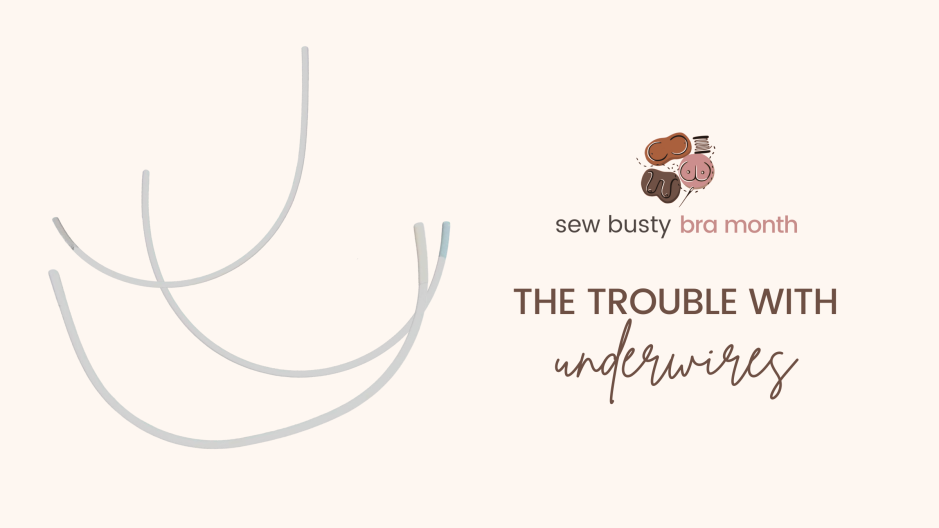
Bra Month | The Trouble with Underwires
Have you ever been poked or prodded by a bra wire? Sworn off wires completely because they’re uncomfortable?
Or maybe you’re pretty sure that your bras fit almost perfectly, but maybe there’s something a little bit off?
Let’s talk underwires.
Let me tell you a story …
I was obsessed with bra fitting long before I started making my own bras. To an extent, I think this obsession was out of necessity, being a hard-to-find size (30J, and living in the states!). So I had tried bra after bra. Mostly, I found a good fit. But something was always just a little off.
Here was my old bra:
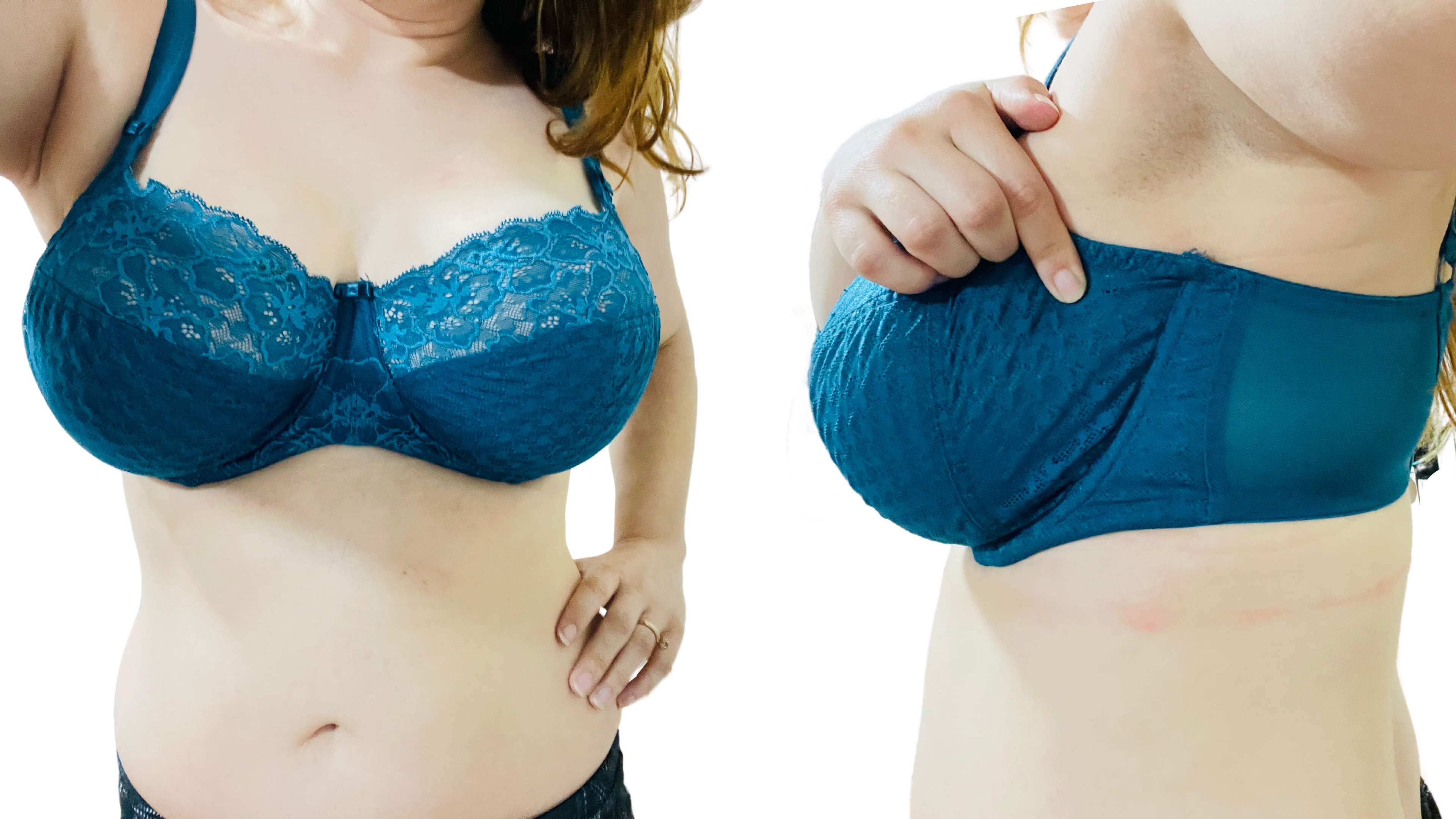
Looks pretty alright, yeah?
But, if you look closely, the underwires aren’t in the right place. Like, at all.
Wires have sizes?
This was a question I asked, in shock, when I first started making bras. Like, what?! Wires have sizes?!
They do. In fact, they have sizes AND shapes. There are short underwires, short vertical underwires, regular underwires, long underwires, extra long, omega shape, flat vertical, super long 😱
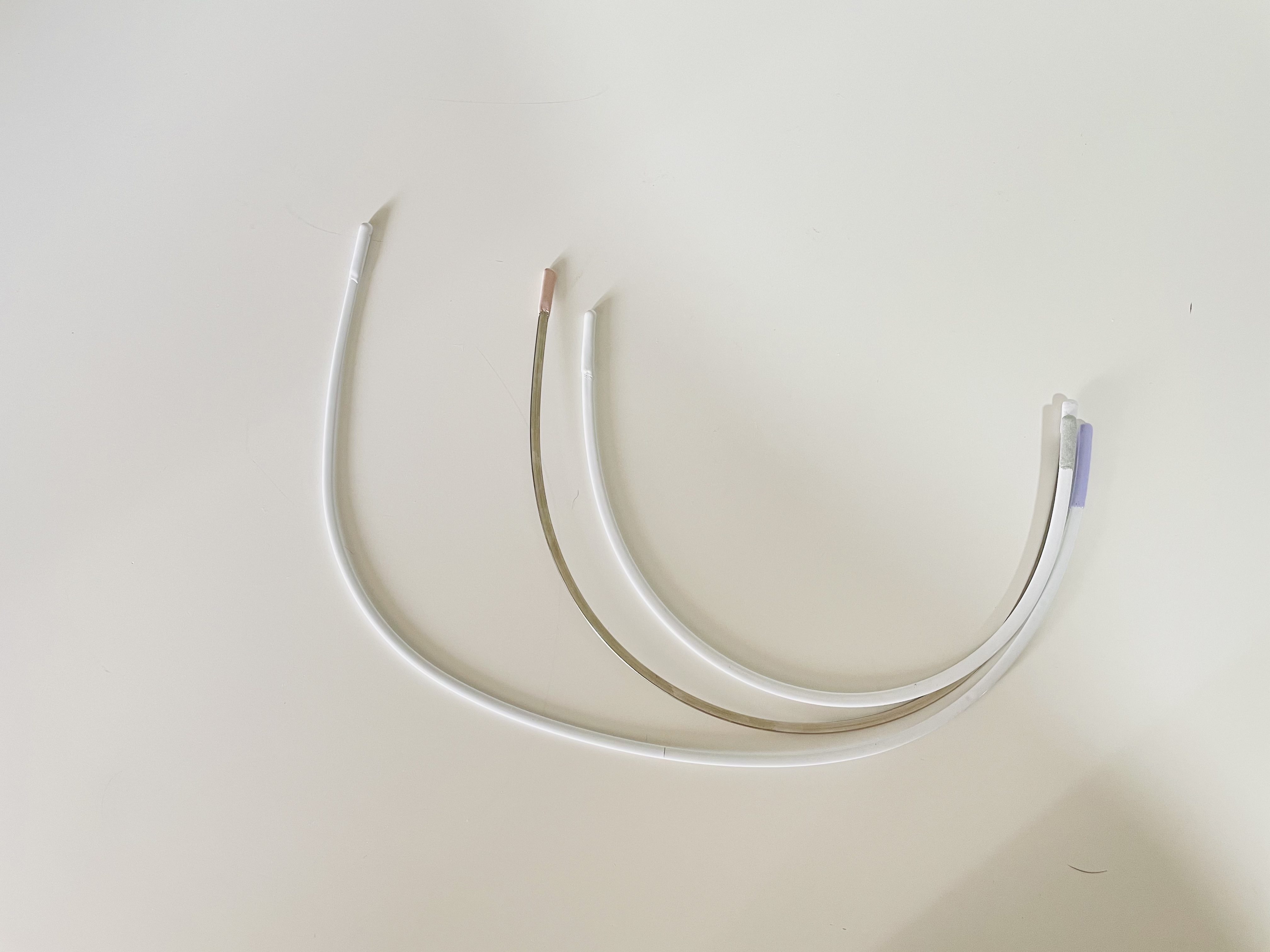
And they come in something like sizes 28-60. (Or at least that’s the range I’ve seen them in.
So what do these sizes mean?
Well, they’re a way of expressing the average breast root, or inframammary fold (IMF). The breast root/IMF is the place where your breast meets your chest.
Just like everything else, it seems, wire sizes are based on a B cup. So, for example, a 30 wire is the average size needed for a 30B bra, and a 52 wire is the average wire needed for a 52B bra. Then, most designers (ready-to-wear bra designers and bra pattern designers) use sister sizing to figure out the average wire size for larger and smaller cup sizes. So, for example, a 48 wire would be the most common wire for:
- 30H
- 32GG
- 34G
- 36FF
- 38F
- 40E
- 42DD
- 44D
- 46C
- 48B
- 50A
- 52AA
And so on. But, like I said, this is based on averages. Relying on this method is not the best way to find your wire size when you’re going for a custom fit.
Why? Average is meaningless.
Let me show you. Back to my old favorite bra:
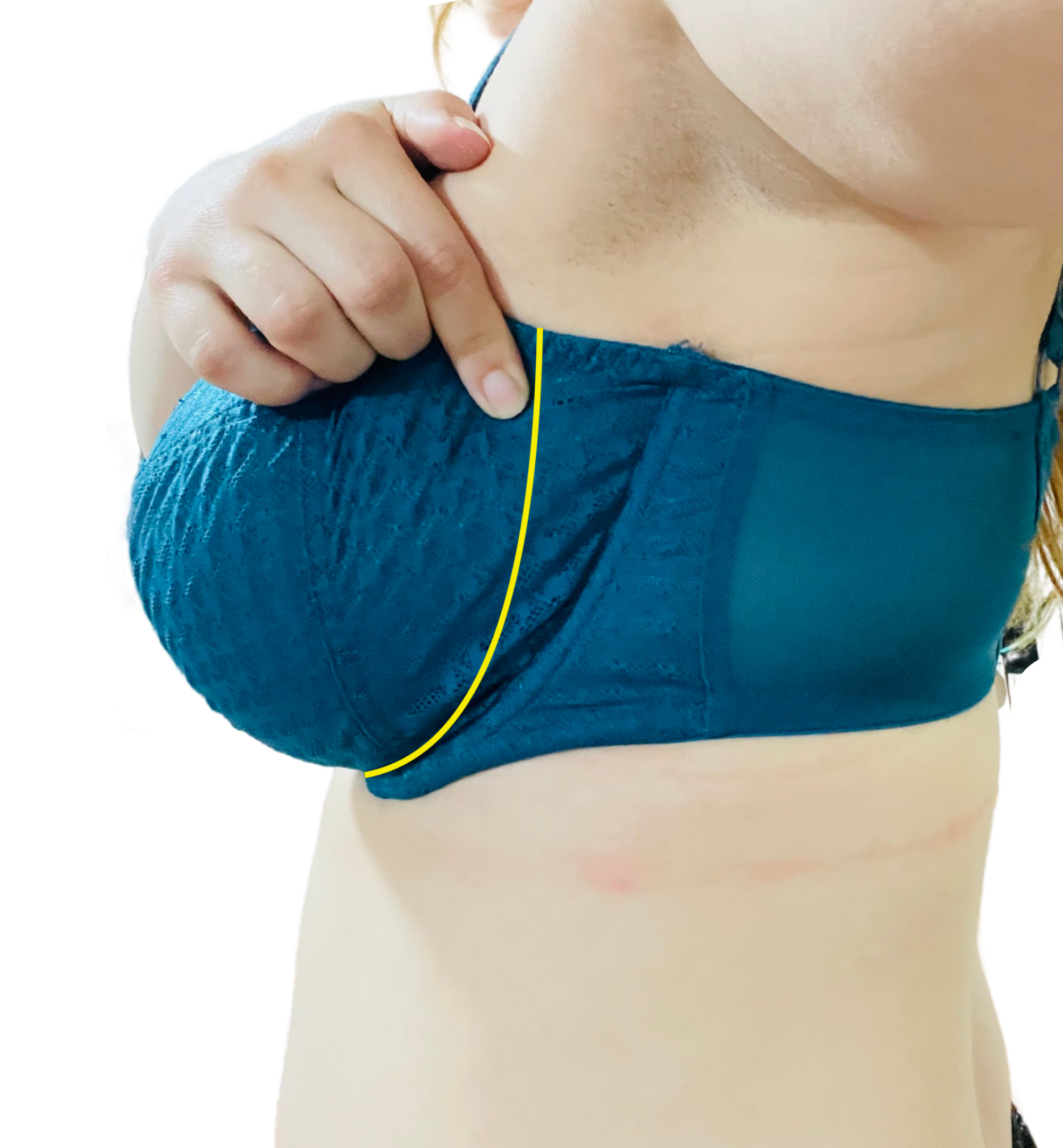
On the above picture, I’ve marked where my breast root is. You can see how far this wire is from my IMF, which I’ve marked in yellow. Here’s a labeled image to make it more clear:
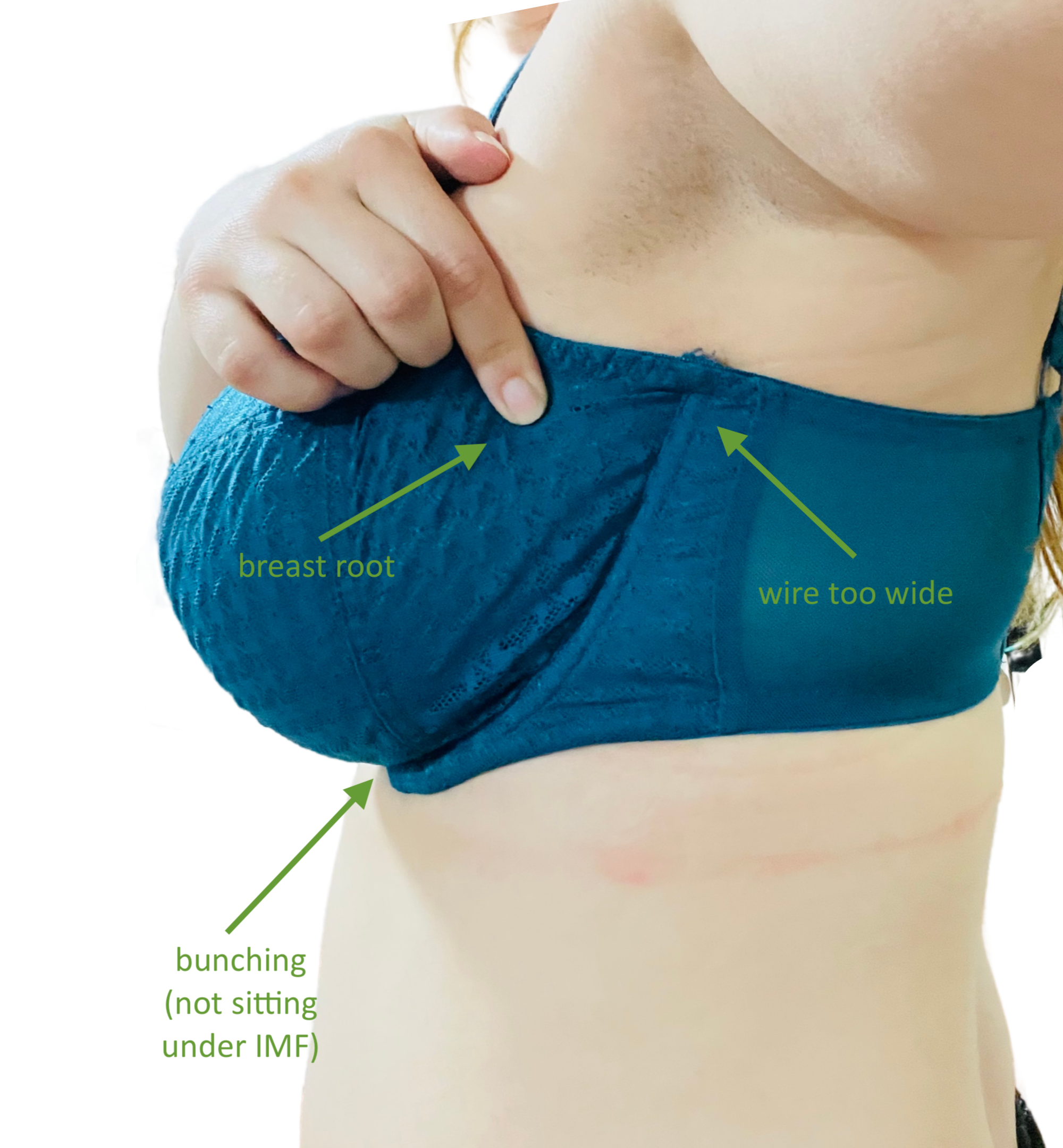
See that bunching under my breast? That’s very common when a wire doesn’t fit. Sometimes it’s because the wire is too small, and is constantly trying to close back to its original size instead of being stretched around the larger IMF. This causes a bit of a gap between the wire and the IMF at the bottom of the breast.
Other times, like in my case, it’s because the wire is too large, so it’s not properly anchored to my IMF, and it therefore wants to inch down, causing bunching. (Another reason for the bunching in my case is that the cup isn’t projected enough, but that’s a conversation for another day.)
Let’s compare to my me-made bra (a Porcelynne Eve), with a smaller wire:
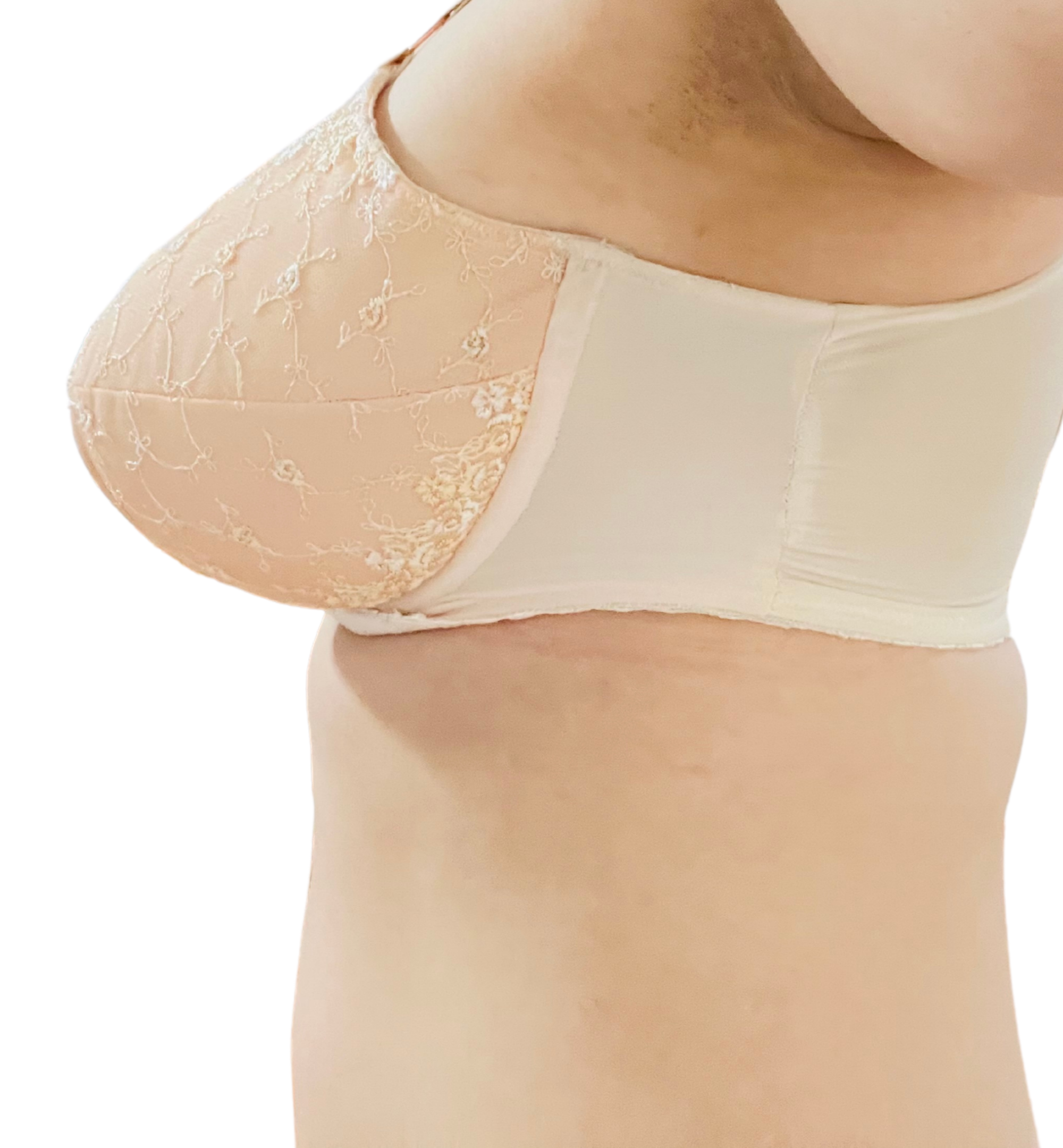
See how the wire follows my IMF, ending much further forward under my armpit than in the teal, storebought bra?
No poking! And I promise that this bra is super comfy! I don’t even notice the wire through the day.
For me, this is the difference between a 44 vertical wire – sprung to about a 46 vertical size – as seen in the teal bra, and an unsprung 42 vertical wire, as seen in the me-made peach bra.
Sprung? Yes, so, some – perhaps most – bra patterns and ready-to-wear bras incorporate what we call wire spring. This means the bra slightly pulls the wires outward to put some tension on them and make them slightly larger than they are when they aren’t in the bra. You can read more about wire spring here.
How do I choose a wire for a custom bra?
You’re going to do a breast root trace! I’m going to demonstrate this on Tatiana, but it’s important for you to know that you should do this with your arm raised. In fact, for some people with very malleable breast roots, it’s best to do this while leaning forward.
To do this, you’ll need a heavy, but malleable wire. Floral wire works great for this purpose.
Click through the slideshow to see as I wrap the wire around Tatiana’s IMF. If Tatiana had an arm, her arm would be raised. And we wrap the wire from the middle, between Tatiana’s breasts, underneath, and around to the outside of the breast, closely following the IMF.
You’ll then pull it away from your breast, being cautious to not change the curvature of the wire. Your result should look like this:
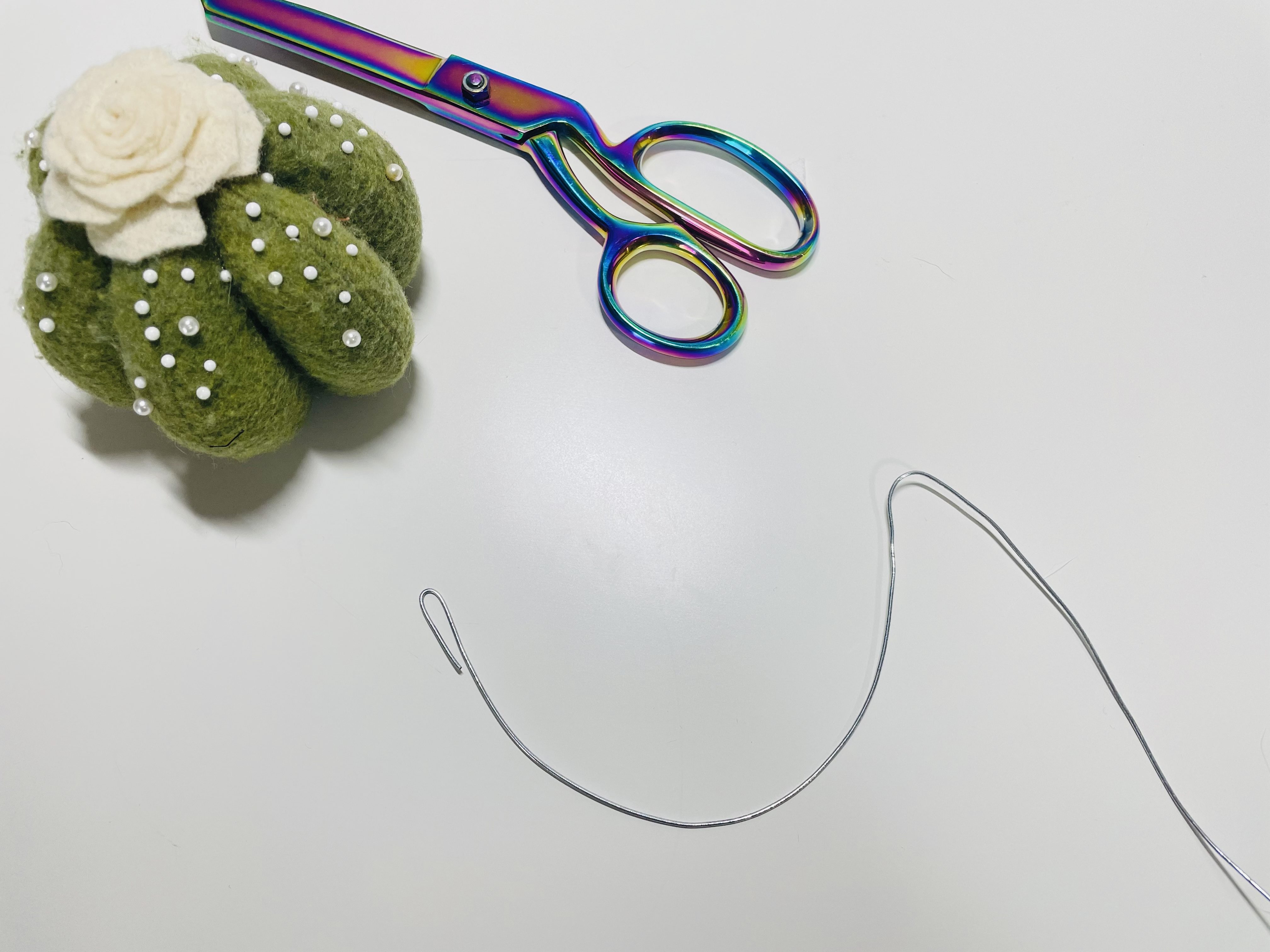
You’re going to compare this to wire charts. You can try different charts from different suppliers. For example, Porcelynne, Bra Makers Supply (sold in the US through Gigi’s Bra Supply), or Emerald Erin all carry wires of different shapes and sizes. When you print your wire chart, make sure they’re printed to 100% scale and that the 1″ square measures 1″.
Here, I’m using the Porcelynne regular wire chart. In slide one, you can see that the 32 wire is just a tiny bit small, the 34 wire looks pretty perfect, and the 36 wire just a bit large.
Now, let’s talk about spring again. If the pattern I was planning to make incorporates wire spring – which most of them do – I’d probably want to go with the 32 underwire, so that when it is opened just a bit under the tension of the bra, the underwire would match the root trace I did for Tatiana. However, if using a pattern that does not incorporate wire spring like my favorite bra pattern, the Porcelynne Eve, I’d go with the 34, which already closely matches Tatiana’s IMF.
The regular wire shape happened to match Tatiana’s breast root trace, however, it’s important to check a bunch of shapes and sizes. For example, here, I’m comparing Tatiana’s root trace to the Bra Makers Supply extra long wire chart:
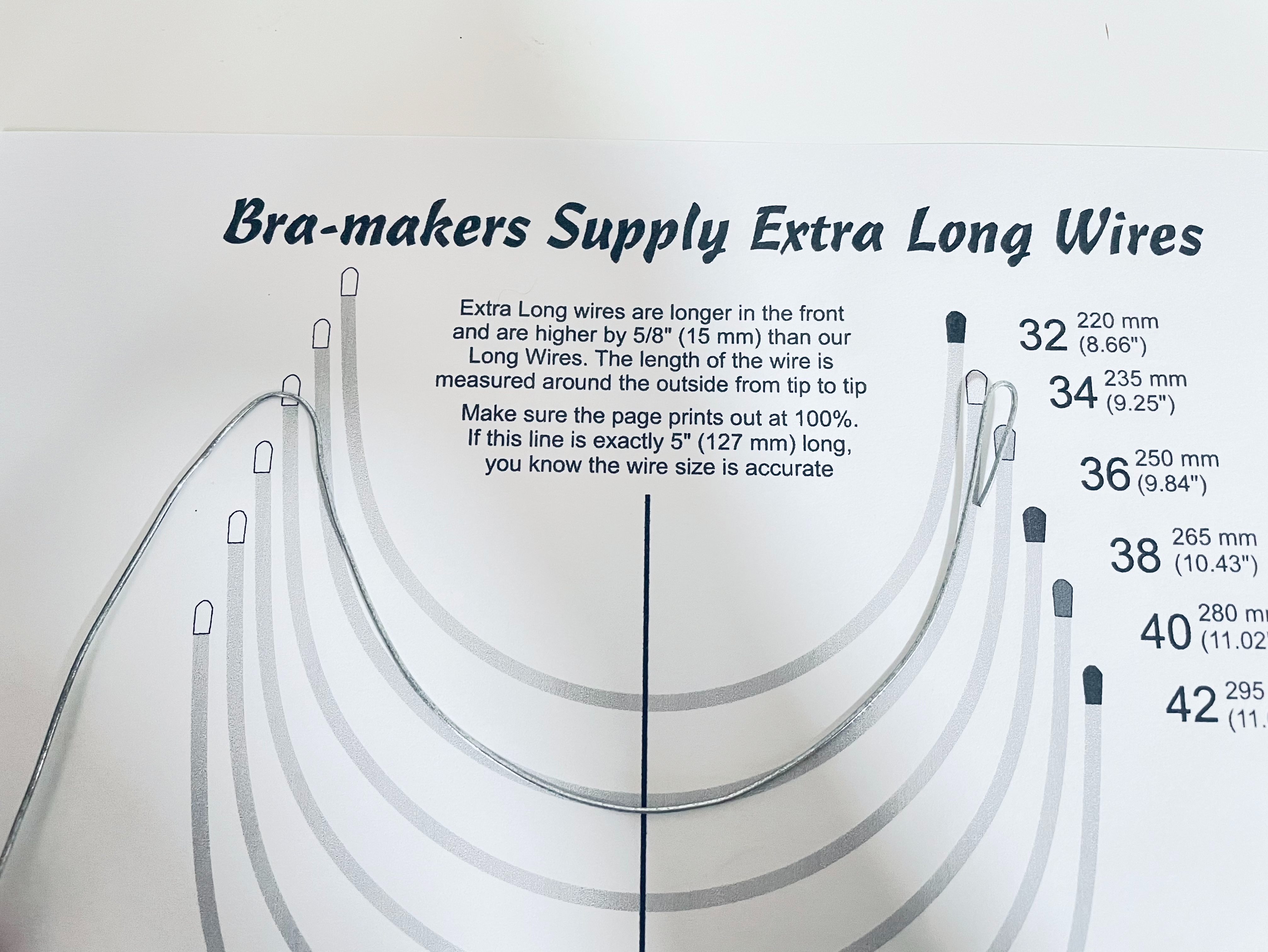
As you can see, the extra long wires are a bit long for Tatitana. But that may not be the case for you!
For example, I use a 42 vertical wire in Porcelynne wires, and a 40 extra long in Bra Makers Supply wires. My mom wears a vertical flat wire, because she – like many people – has a flat spot on the bottom of her breast.
Once you’ve matched your wire using your breast root trace and wire charts, I want you to order at least three sizes of wires.
Don’t just get the size/shape that you think will work. Breast root traces are the simplest way to get a pretty accurate view of your IMF, but they aren’t infallible. I thought I needed a 38 vertical wire based on my root trace, but I really needed a 42. Buy a few sizes, and maybe a few styles and try them onto your bare breast! (When I fitted my mom, we bought something like 6 different wires!) Even better, make a bra fitting band, leaving the underwire channeling open, and try out a few different wires on your body in a band. (The wonderful Kristen Kemp will be talking more about this in a post at the end of the month!)
Okay, I’m pretty sure I know my wire size and shape, but how do I put it in a pattern?
So, the first option is to use a pattern that already takes your unique wire size and shape into account. For example, my favorite wired bra pattern, the Porcelynne Eve, is a modular pattern that’s based on your wire size/shape. I use the Porcelynne Eve vertical wire band and non-uniform cups, but the pattern is also available for:
- regular wire bands and uniform cups,
- short vertical wire bands (which use the non-uniform cups),
- wide flat wire bands (which use the non-uniform cups), and
- long vertical wire bands (which use the non-uniform cups)
Annie and Myras similarly designs their bra patterns to be used with various wire sizes (though I’ve yet to try their patterns).
Need help finding a pattern? Check out our roundup of busty bra patterns!
The second option, if you’d like to use a pattern that isn’t modular, is to follow these instructions on how to modify your frame and cup pattern to match your preferred wire. I personally like to use option 3, but all of the options have pros and cons, as listed by Erin.
That’s it for now. Got more wire questions? Drop a comment and we’ll cover them in another post!
^Some of the links in this post are affiliate links. This means if you click on the link and purchase the item, I will receive an affiliate commission at no extra cost to you. All opinions remain my own.


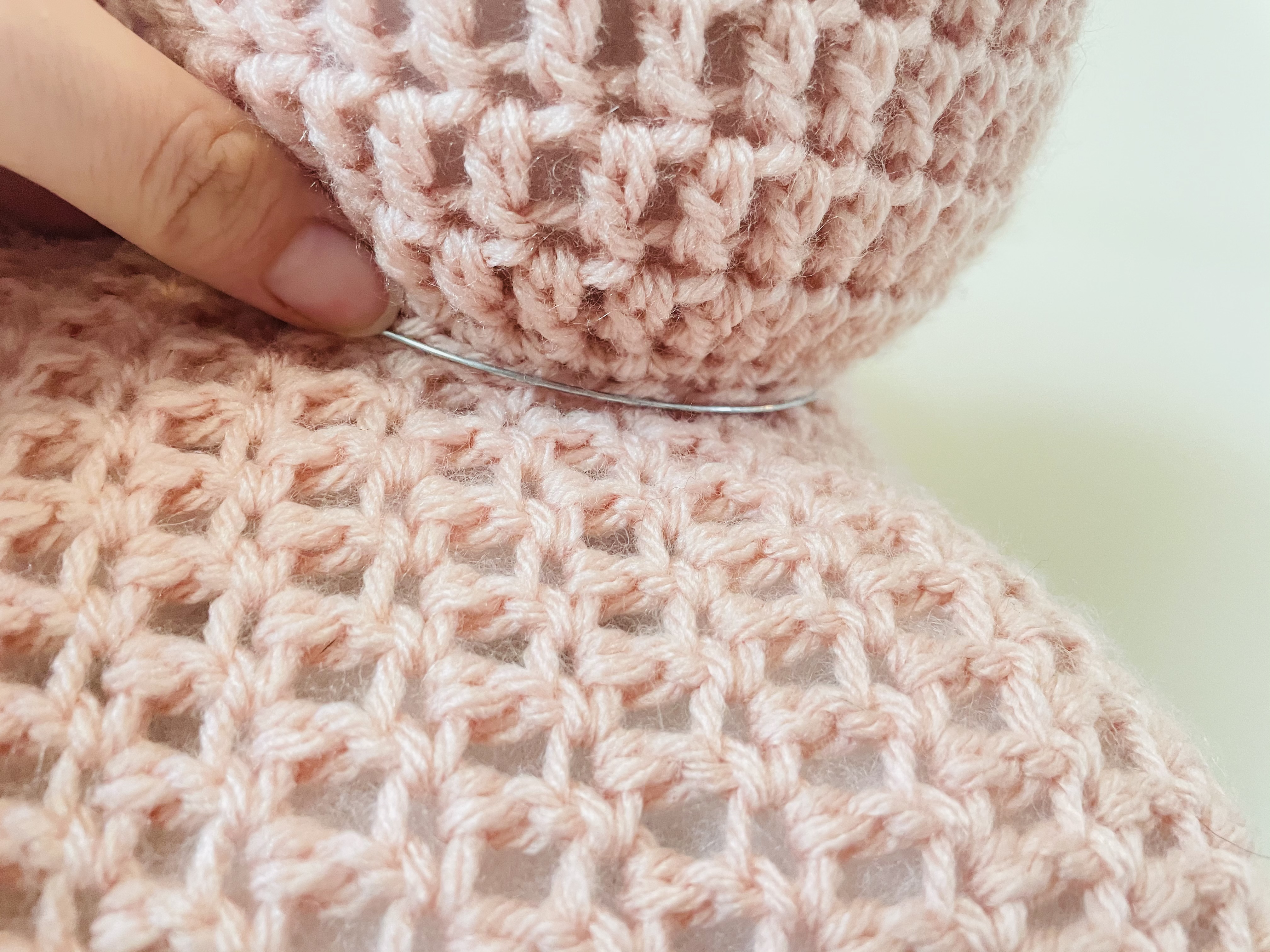
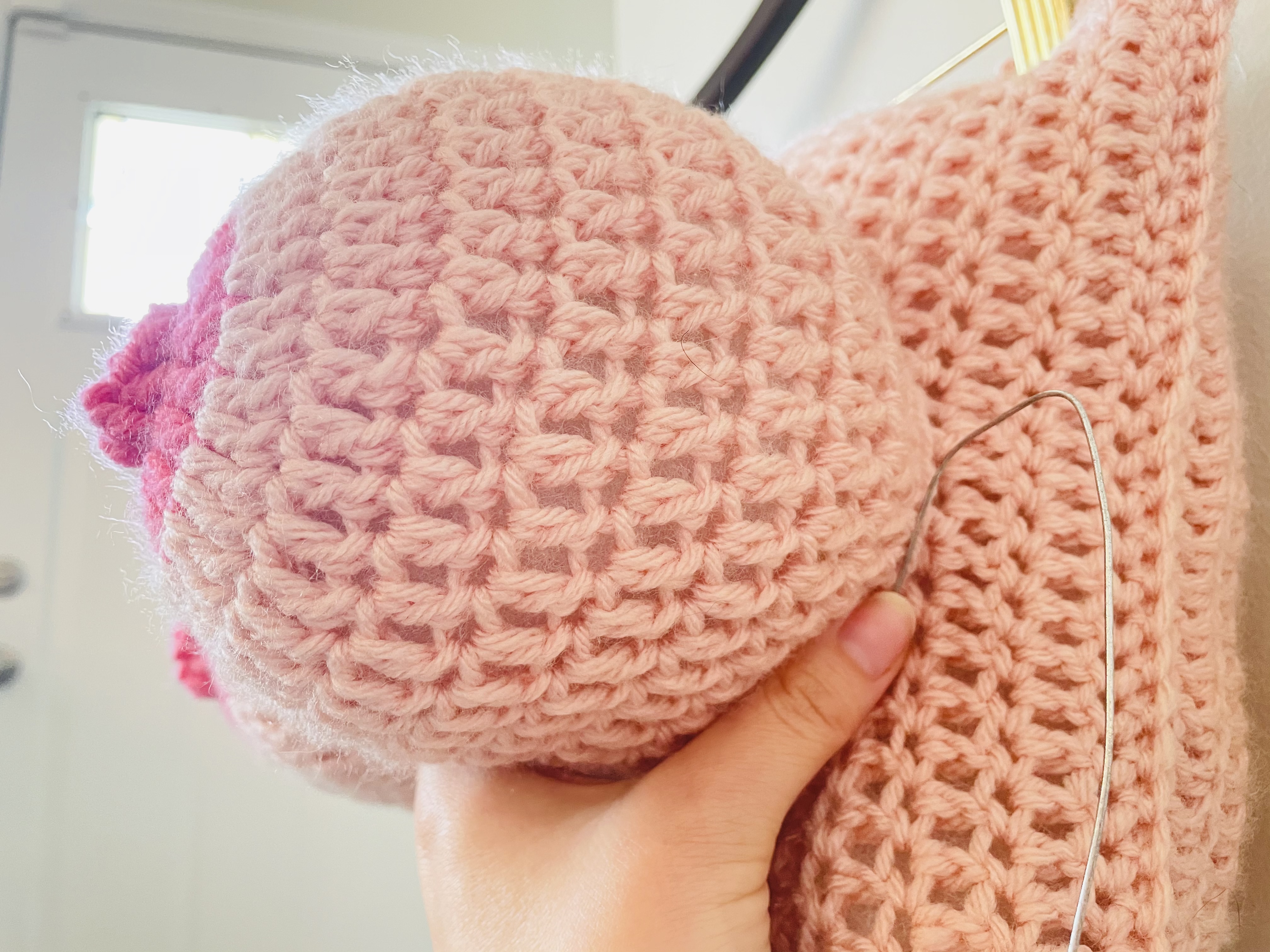
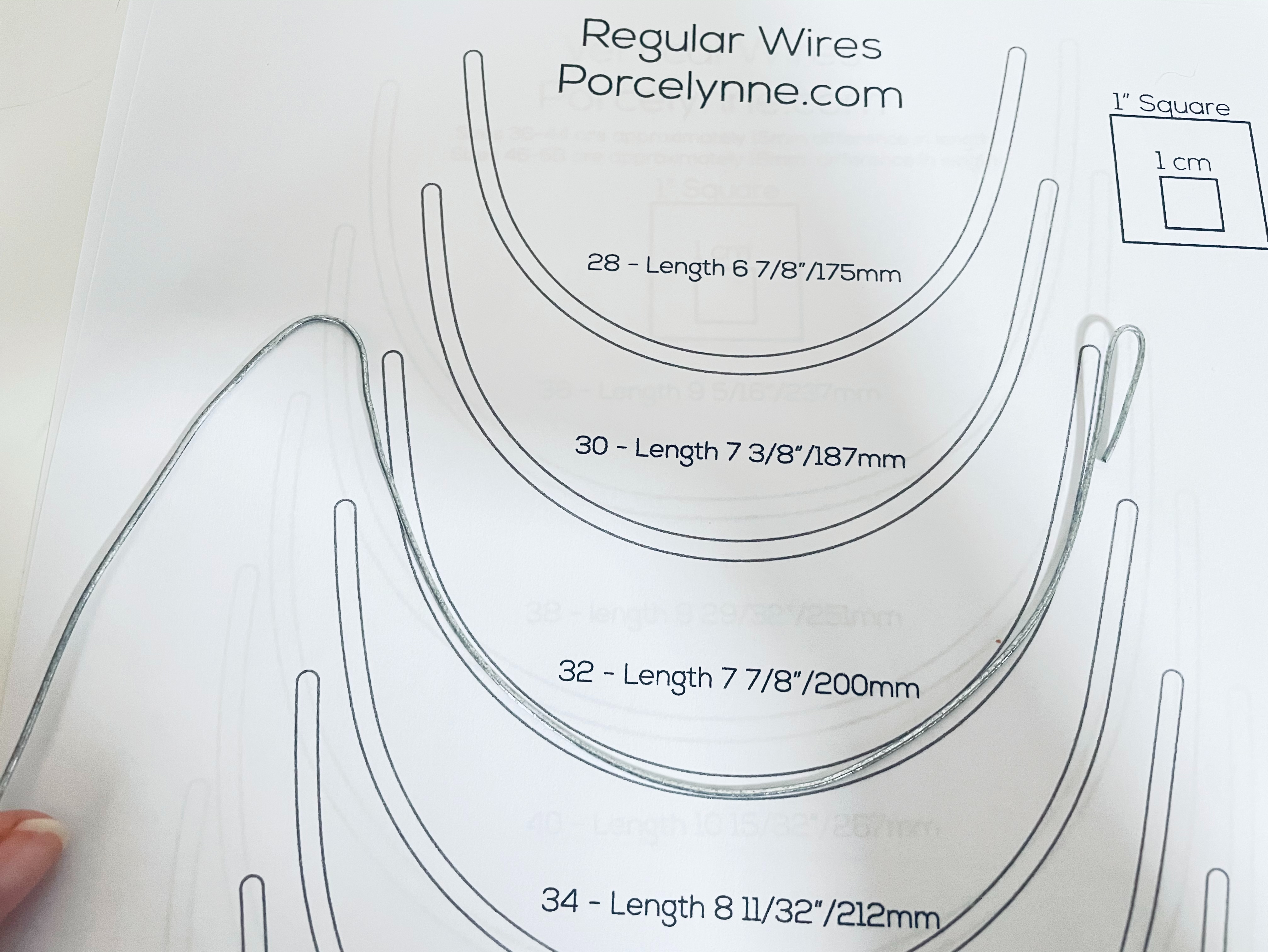
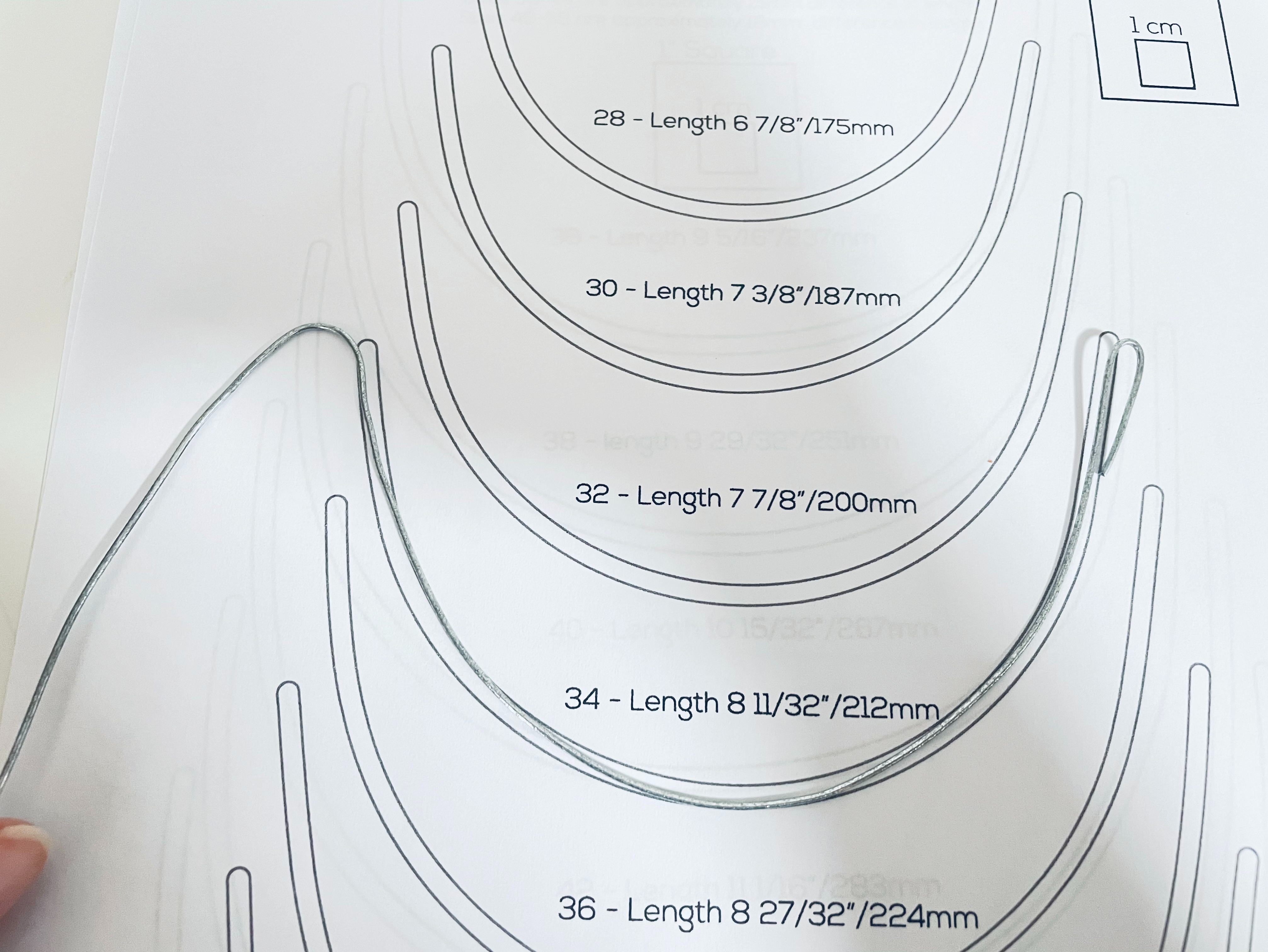
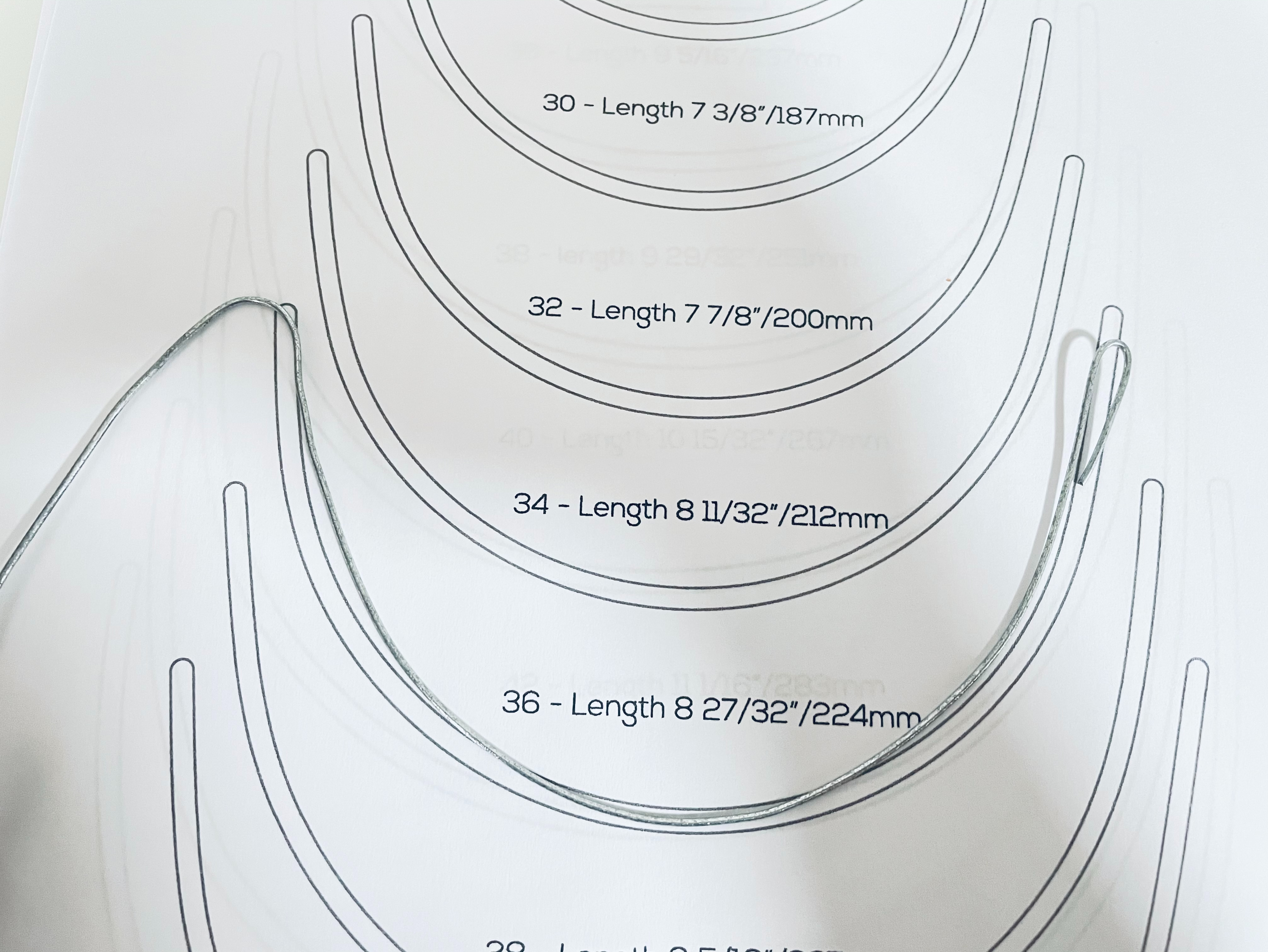
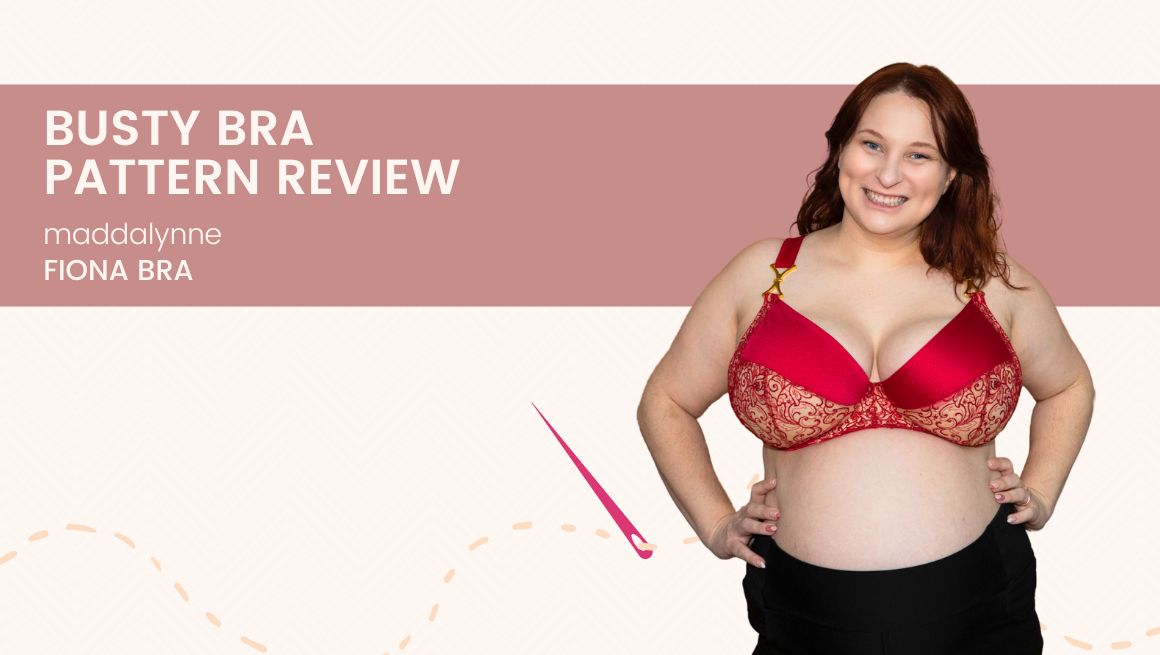
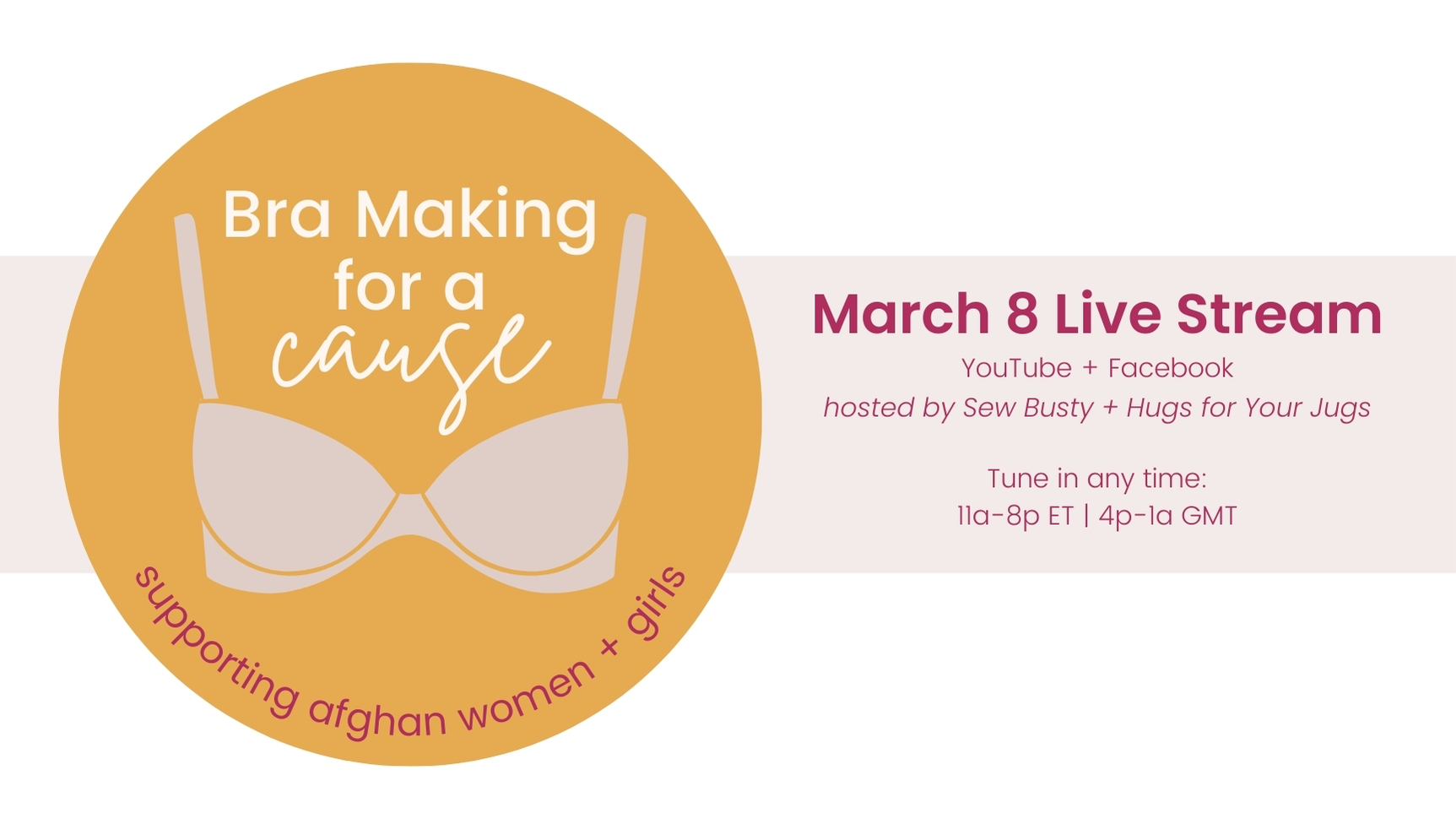
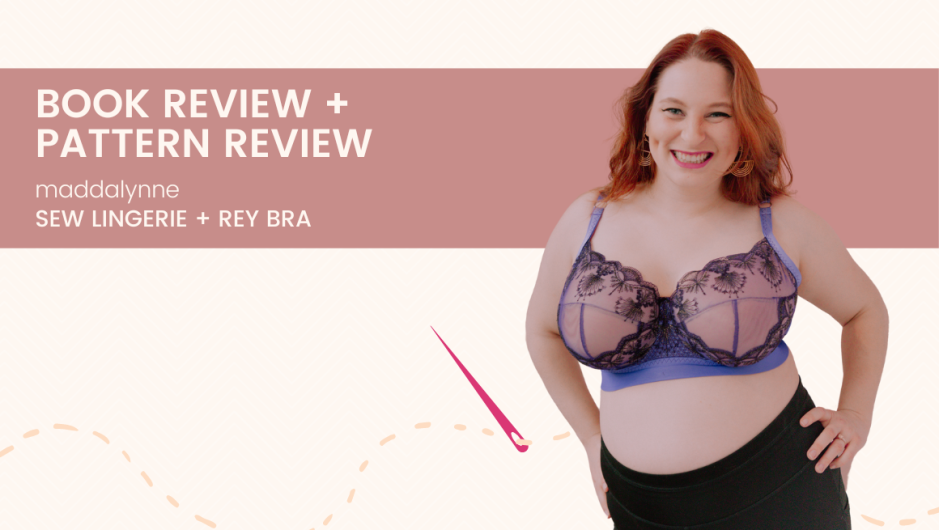
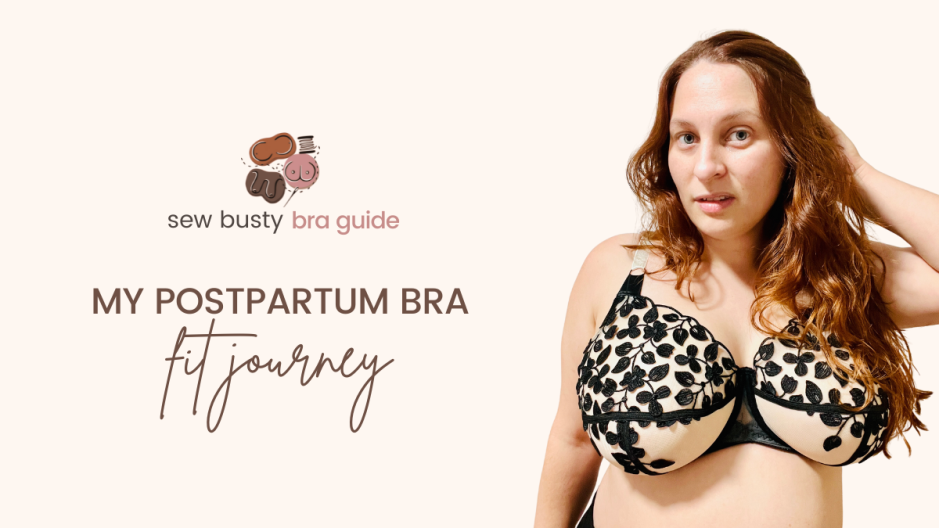
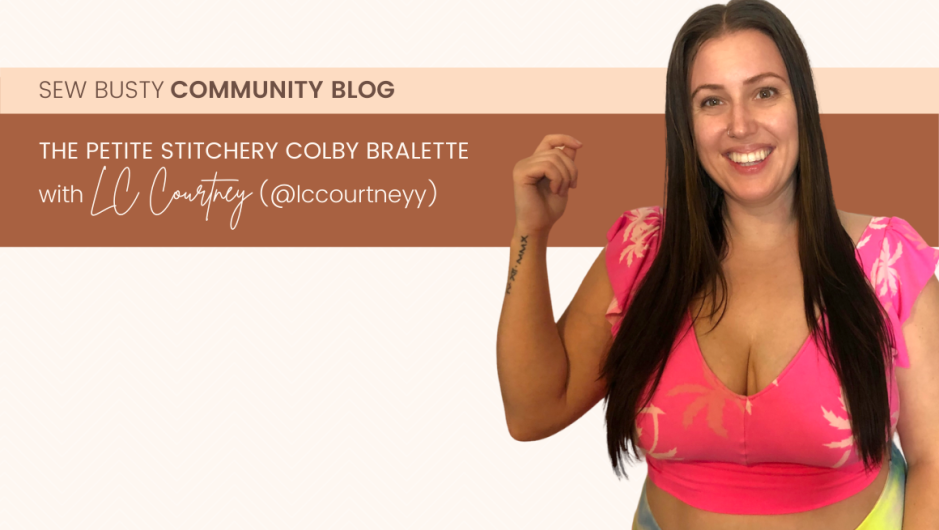
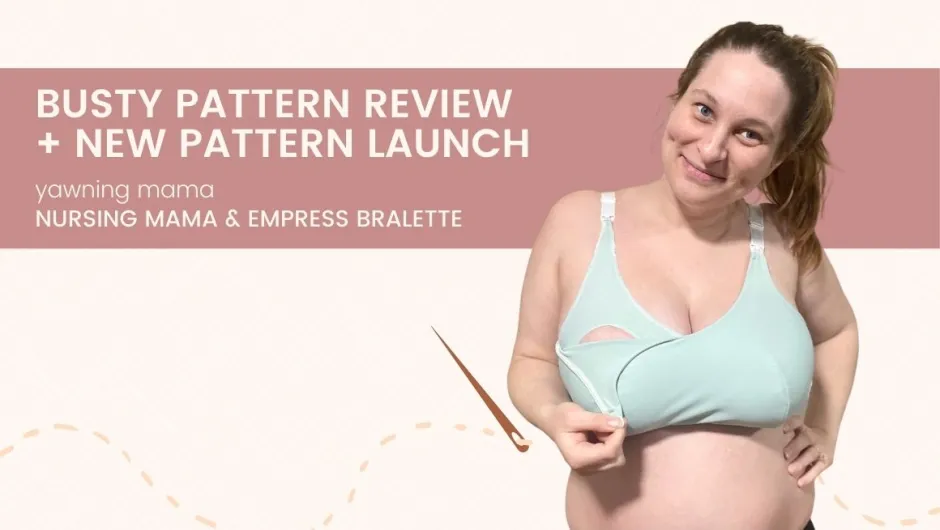
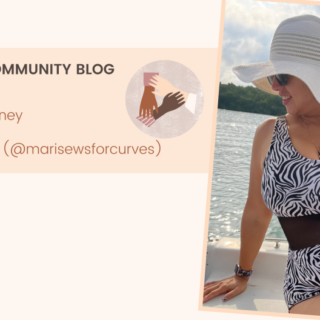

Kaz
June 12, 2021Thank you for this great information! I’ve learned a lot. 😊
sewbustycommunity
June 13, 2021Yay! I’m so glad!!!
Gisela
June 13, 2021Incredibly useful and educational. Thank you so much!
sewbustycommunity
June 13, 2021So glad you enjoyed it!
Cathy Rooney
June 19, 2022You’re brilliant! So many women need this kind of help.
Libby
August 9, 2022You had me at “Just like everything else, it seems, wire sizes are based on a B cup” Sister sizing explained. Mind blown!
sewbustycommunity
October 20, 2022I got you! <3
Pam
October 2, 2022Do you have underwire sizes larger than 60? I measured my underwire and it’s 20 inches… underwire size 60 is still small.
sewbustycommunity
October 20, 2022I don’t sell underwires, but I’m not sure that I know of a distributor that sells larger than 60. That said, have you tried doing a root trace? The length of the wire is really not the best indicator for size, since fit is more about the curvature than length. Make sure you do a root trace to find your best wire size.
Alyssa Custer
July 6, 2023As I’m sure is the case for many of us my breasts are different sizes, which also translates into a fairly different trace shape/size. I ordered a bunch of shapes & sizes to try, but wondering what you do if ultimately you need two different sizes/shapes? (For reference I am a RTW 34HH/36H in UK sizing).
Thank you!!! This was super informative.
sewbustycommunity
October 8, 2023Hi! I’m sorry I’m just responding to this! I’ve been on a bit of a hiatus while I try to adjust to some life changes 🙂
That’s a great question! Essentially, you can make your two cups different. You’d alter the bridge slightly to merge the two cup styles at the bridge. If you post on our Facebook group, I’d be happy to draw out what I mean!
Lynne
October 19, 2023Hi. I am on bra no 7 without getting the right fit. I seem to always have the problem where the wire doesn’t sit in the breast crease mainly at the front gore(just under inner cup it is more on my chest). I have done many breast root traces even by my husband 🫣. I still come up with a 42. Although I did think I was a 40 and bought lots from Porcelynne (I live in South Africa) not easy to find good ones. Do you have any advice I would really appreciate it
Dee
October 21, 2023what gauge floral wire did you use?
sewbustycommunity
October 21, 202326 gauge!
Charlotte
April 24, 2025Oh, all the things to be aware of when finding wires!
The problem for me is that I do not know how much wire spring the different patterns use – so if I pick a wire after my shape it will be waaay to big when sprung out.